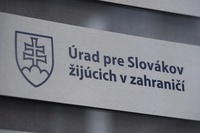Virus

- Posts : 35785
Join date : 2012-02-10
- Post n°301
 Re: Virus
Re: Virus
Fakat, postoji i PP u ministarstvu trgovine https://mtt.gov.rs/ministarstvo/tim-ministarke/predrag-perunicic/
_____
★
Uprava napolje!

- Posts : 7775
Join date : 2017-03-14
- Post n°303
 Re: Virus
Re: Virus
jer nakon 3 dana nema šanse niko da se zaraziKirko Skaddeng wrote:Aha, debilčine
New Zealand, with a population of five million, has recorded just over 2,300 cases of Covid and 25 deaths.
ostrvska zemlja Bogu iza tregera, njima je lako iskontrolisati ulaske

- Posts : 11341
Join date : 2014-10-28
- Post n°304
 Re: Virus
Re: Virus
isto kao i britaniji.
_____
most of us probably not getting better
but not getting better together

- Posts : 7775
Join date : 2017-03-14
- Post n°305
 Re: Virus
Re: Virus
pa ne baš, od Francuske do Britanije može da se prepliva ko je u boljoj kondiciji od Australije do NZ malo teže, imaju migrante, Lamanš, povezani su sa kontinentalnom Evropom a imaju i Heathrow...za UK je to nemoguća misija

- Posts : 28265
Join date : 2015-03-20
- Post n°306
 Re: Virus
Re: Virus
veljko rogošić i kovidaši
_____
#FreeFacu
Дакле, волео бих да се ЈСД Партизан угаси, али не и да сви (или било који) гробар умре.

- Posts : 7775
Join date : 2017-03-14
- Post n°307
 Re: Virus
Re: Virus
"Jos i kad bi znao u sta gledas...
1) vec receno, mali uzorak.
2) procitaj limitacije studije koje su autori naveli u diskusiji
3) kljucna rec ti je u naslovu rada: correlation
4) starosna grupa u studiji nema veze sa penzionerima
Izmedju ove studije i tvog nedvosmislenog zakljucka da bi davanje vit D penzosima prepolovilo pritisak na zdr sistem je skok od sedamdeset milja.
Ako dobro razumem na sta ciljas, taj argument ti ne vredi. Priroda naucnih saznanja je da su promenljiva, inace ne bi mogla biti naucna. Fazon je da je nacin na koji se menjaju definisan i kontrolisan. A dva klika na google search nisu deo tog nacina.
Konkretno za ovo, tvrditi da bi besplatan vitD svetu resio problem pritiska kovida na zdr sistem je komicna, a u ovoj konkretnoj situaciji (nesposobnost srpske vlasti da nabavi vakcine) je i tragicna."
evo nadam se da je ova studija bolja
1) vec receno, mali uzorak.
2) procitaj limitacije studije koje su autori naveli u diskusiji
3) kljucna rec ti je u naslovu rada: correlation
4) starosna grupa u studiji nema veze sa penzionerima
Izmedju ove studije i tvog nedvosmislenog zakljucka da bi davanje vit D penzosima prepolovilo pritisak na zdr sistem je skok od sedamdeset milja.
Ako dobro razumem na sta ciljas, taj argument ti ne vredi. Priroda naucnih saznanja je da su promenljiva, inace ne bi mogla biti naucna. Fazon je da je nacin na koji se menjaju definisan i kontrolisan. A dva klika na google search nisu deo tog nacina.
Konkretno za ovo, tvrditi da bi besplatan vitD svetu resio problem pritiska kovida na zdr sistem je komicna, a u ovoj konkretnoj situaciji (nesposobnost srpske vlasti da nabavi vakcine) je i tragicna."
evo nadam se da je ova studija bolja
This is a very important study on vitamin D and Covid-19. Its findings are incredibly clear. An 80% reduction in need for ICU and a 60% reduction in deaths, simply by giving a very cheap and very safe therapy - calcifediol, or activated vitamin D. https://t.co/lB7sYxDQfn
— David Davis (@DavidDavisMP) February 13, 2021

- Guest
- Post n°308
 Re: Virus
Re: Virus
By: The Associated Press
Posted at 2:30 PM, Feb 14, 2021
and last updated 8:43 PM, Feb 14, 2021
LONDON — U.K. government scientific advisers say the COVID-19 variant now predominant in the country may be up to 70% more deadly than previous variants, underscoring concerns about how mutations may change the characteristics of the disease.
The findings from the New and Emerging Respiratory Virus Threats Advisory Group, published Friday on the government’s website, build on preliminary research released Jan. 21. The group includes experts from universities and public agencies across the U.K.
The new report is based on analysis of a dozen studies that found the so-called Kent variant, named after the county where it was first identified, is likely 30% to 70% more deadly than other variants. The studies compared hospitalization and death rates among people infected with the variant and those infected with other variants.
The results of the analysis are worrisome, said Dr. David Strain, a clinical senior lecturer at the University of Exeter Medical School and the clinical lead for COVID at the Royal Devon & Exeter Hospital.
“The higher transmissibility means that people who were previously at low risk of catching COVID (particularly younger fitter females) are now catching it and ending up in hospital,″ Strain said. “This is highlighted by the latest figures for hospitalization that now suggest almost 50:50 male to female ratio compared to this being predominantly in men during the first wave.″

- Korisnik

- Posts : 4670
Join date : 2015-02-17
- Post n°310
 Re: Virus
Re: Virus
Da li da budemo umereno optimistični, prvi ovakav globalni trend nakon godinu dana.



- Posts : 7894
Join date : 2019-06-06
- Post n°312
 Re: Virus
Re: Virus
Prema tim informacijama, Balašević se detak dana unazad lečio kod kuće od simptoma upale pluća.
Ipak, kada mu se stanje pogoršalo, on je preventivno primljen u Infektivnu kliniku.
_____
????

- Posts : 28265
Join date : 2015-03-20
- Post n°314
 Re: Virus
Re: Virus
grobarska pička.
(sam ću napustiti internet )
)
(sam ću napustiti internet
 )
)_____
#FreeFacu
Дакле, волео бих да се ЈСД Партизан угаси, али не и да сви (или било који) гробар умре.

- Posts : 13817
Join date : 2016-02-01
- Post n°316
 Re: Virus
Re: Virus
Današnja sreda:
2467 novih (18,9% pozitivnih)
16 preminulih
3451 hospitalizovano
142 na respiratoru
Prošla sreda:
2014 novih (15,7% pozitivnih)
15 preminulih
3814 hospitalizovano
129 na respiratoru
2467 novih (18,9% pozitivnih)
16 preminulih
3451 hospitalizovano
142 na respiratoru
Prošla sreda:
2014 novih (15,7% pozitivnih)
15 preminulih
3814 hospitalizovano
129 na respiratoru

- Posts : 28265
Join date : 2015-03-20
- Post n°317
 Re: Virus
Re: Virus
napustili smo zonu od 15-16%, idemo lagano ka 20, pa 25% ponovo. ne može i ekonomija i virus.
_____
#FreeFacu
Дакле, волео бих да се ЈСД Партизан угаси, али не и да сви (или било који) гробар умре.

- Posts : 52542
Join date : 2017-11-16
- Post n°318
 Re: Virus
Re: Virus
Ovo sa brojem umrlih ja vise ne znam ni kako da nazovem majke mi

- Posts : 35785
Join date : 2012-02-10
- Post n°319
 Re: Virus
Re: Virus
Mór Thököly wrote:Ovo sa brojem umrlih ja vise ne znam ni kako da nazovem majke mi
Ja bih nazvao stimovanje
_____
★
Uprava napolje!

- Posts : 8349
Join date : 2014-10-28
Location : imamate of futa djallon
- Post n°320
 Re: Virus
Re: Virus
damage control
_____
i would like to talk here about The Last of Us on HBO... and yeah, yeah i know.. the world is burning but lets just all sit and talk about television. again - what else are we doing with ourselves ? we are not creating any militias. but my god we still have the content. appraising content is the american modus vivendi.. that's why we are here for. to absorb the content and then render some sort of a judgment on content. because there is a buried hope that if enough people have the right opinion about the content - the content will get better which will then flow to our structures and make the world a better place

- Posts : 28265
Join date : 2015-03-20
- Post n°322
 Re: Virus
Re: Virus
repriza letnjeg scenarija u objektivnim okolnostima, opet smo avangarda sem što smo imali 1 talas više od drugih
_____
#FreeFacu
Дакле, волео бих да се ЈСД Партизан угаси, али не и да сви (или било који) гробар умре.

- Posts : 8696
Join date : 2016-10-04
- Post n°323
 Re: Virus
Re: Virus
Али не можете да поредите среду на среду, ово сад је дошло после 4 нерадна дана и мањих бројева.
Најбоље је вадити просек целе недеље.
Најбоље је вадити просек целе недеље.

- Guest
- Post n°324
 Re: Virus
Re: Virus
‘Politics was always in the room.’ WHO mission chief reflects on China trip seeking COVID-19’s origin | Science | AAAS (sciencemag.org)
‘Politics was always in the room.’ WHO mission chief reflects on China trip seeking COVID-19’s origin
By Kai Kupferschmidt Feb. 14, 2021 , 8:00 AM
The World Health Organization (WHO) mission to China to probe the origins of the COVID-19 pandemic had a bumpy start, so it’s perhaps no surprise that the team’s departure from China didn’t go entirely smoothly either. A 9 February press conference in Wuhan to summarize the mission’s findings was widely hailed within China, but criticized elsewhere.
During the press conference, WHO program manager and mission leader Peter Ben Embarek and team member Marion Koopmans praised China’s cooperation during the 4-week investigation. They said it was “extremely unlikely” that SARS-CoV-2 originated in a Chinese laboratory and said the team would not investigate that hypothesis further. But they kept open the possibility that the virus arrived in Wuhan on frozen food, a route promoted aggressively by Chinese media to suggest the virus was imported from elsewhere in the world.
Some journalists and scientists called the event a double win for China and demanded more evidence for the rejection of the lab theory. And on 12 February, WHO Director-General Tedros Adhanom Ghebreyesus appeared to publicly push back against the team, saying, “All hypotheses are on the table” with respect to the pandemic’s origins. Meanwhile, media reports have suggested WHO team members were disappointed about not getting access to certain data, for instance on Chinese patients with respiratory symptoms who may have been some of the earliest COVID-19 cases.
WHO plans to release a summary report of the mission’s finding as early as next week; a full report will come later.
Science had an hourlong video interview with Ben Embarek on Saturday after his return to Geneva. An epidemiologist and food safety scientist, he has experience both with China—he worked at WHO’s Beijing office between 2009 and 2011—and with coronaviruses, as the head of the agency’s effort to investigate the animal origin of the Middle East respiratory syndrome virus after its emergence in 2012.
Ben Embarek defended the much-debated press conference, explained why the lab escape hypothesis has not been ruled out, and summarized what was learned about when, where, and how SARS-CoV-2 first infected humans. This interview has been edited for brevity and clarity.
Q: What was the most surprising experience during your mission?
A: The whole 4 weeks were a roller coaster of feelings and experiences. The amount of attention from the outside world was very special. Visiting the labs, but also visiting that market that has been closed for a year now, was very important and extremely useful to better understand the environment. Some of the meetings we had with COVID-19 victims and with relatives of victims were also very special.
Q: At Friday’s press conference in Geneva, Tedros seemed to contradict you by saying that with respect to the origins of SARS-CoV-2: “All hypotheses are on the table.” Was it a mistake to call the lab origin hypothesis “extremely unlikely”?
A: No. We first developed a pathway of all the possible ways the virus could be introduced into the human population in late 2019. A lab accident is one hypothesis, another is the direct introduction from an animal host, and the others are different versions of intermediary hosts.
For each hypothesis, we tried to put facts on the table, look at what we had in terms of arguments, and then make an assessment of each. It was already a big step to have Chinese colleagues assess and evaluate such a hypothesis based on what we had on the table, which was not much. Yes, lab accidents do happen around the world; they have happened in the past. The fact that several laboratories of relevance are in and around Wuhan, and are working with coronavirus, is another fact. Beyond that we didn’t have much in terms of looking at that hypothesis as a likely option.
Q: But what led you to use the “extremely unlikely” label? Did you learn anything that made it less likely?
A: We should not put too much focus on the wording. We were looking at different options. At some point we were thinking: Should we use a ranking, with one being the most unlikely, five the most likely, or should we use colors, or should we find another scale? We ended up with a five-phrase scale: “extremely unlikely,” “unlikely,” “possible,” “likely,” and “very likely.” It’s more an illustration of where these hypotheses are to help us organize our planning of future studies.
Q: But my question is whether you learned anything new in China. Now that you’ve been there, do you have more reason to say it’s “extremely unlikely” than before?
A: Yes. We had long meetings with the staff of the Wuhan Institute of Virology and three other laboratories in Wuhan. They talked about these claims openly. We discussed: What did you do over the past year to dismiss this claim? What did you yourself develop in terms of argumentations? Did you do audits yourself? Did you look at your records? Did you test your staff? And they explained how they worked and what kind of audit system they had. They had retrospectively tested serum from their staff. They tested samples from early 2019 and from 2020. There were a lot of discussions that we could not have had if we had not traveled to Wuhan. We also did not have evidence provided by outsiders to support any of the claims out there. That could potentially have tipped the balance. What we saw and discussed gave us much more confidence in our assessment. The consensus was that this is an unlikely scenario.
We also had difficulties designing future studies to look into the laboratory claims within our joint group, because if you want to explore such a hypothesis further, you need a different mechanism. You need to do a formal audit, and that’s far beyond what our team is mandated to do or has the tools and capabilities to do. So that was also a reason why we could not start moving forward in our next series of studies into that direction. But the fact that the hypothesis is listed or assessed as extremely unlikely is not the same as if it had been listed or assessed as impossible. We’re not closing the door.
Q: So, it will be investigated further, just not by you and your team?
A: It’s not something we’re going to pursue in the coming weeks and months. But our assessment is out there, and the topic is on the table. This is to me a big achievement, because for the past year it was mission impossible to even discuss it or even put it on the table or on the agenda of any meeting or discussion.
Q: But will someone else investigate?
A: Remember that the report is the outcome of a joint team of Chinese experts and international experts. If others want to pursue that hypothesis, it’s there, it’s being discussed openly and accepted. As I said, this would not be something that this team, or I believe even WHO alone, would be able to move forward on. That would have to be, I believe, a United Nations–wide approach in consultation with member states, if that was something that the international community would want to move forward with.
Q: Would it have been better to project less certainty at the press conference in Wuhan? The way most journalists understood it, the way I understood it, was that this has been ruled out.
A: Let me be clear on this: The fact that we assessed this hypothesis as extremely unlikely doesn’t mean it’s ruled out. … We also state in the report that all these hypothesis assessments will be reviewed on a regular basis. We may pick that one up again if new evidence comes up to make it more likely. It’s work in progress.
Q: Another scenario that you outlined was that the virus was transmitted through frozen food. What is the evidence for that?
A: This scenario is an interesting one because of the findings we made in the Huanan market, which is a wholesale market selling a lot of frozen products and refrigerated products—animal products, meat products, and seafood. And we know that the virus persists for a very long time on frozen products. China has reported over the past months a few instances where they have isolated the virus and positive samples on imported frozen products.
But that’s happening in 2020, at a time where the virus is widely circulating in the world, where there are multiple outbreaks in food factories around the world. It is probably an extremely rare event; we can see that from only a few dozen positive findings in China, out of 1.4 million samples taken so far. It’s potentially possible, so it’s worth exploring. But we have to separate the situation in 2020 with imported goods in China, and the situation in 2019, where that was not a possible route of introduction. There were no widespread outbreaks of COVID-19 in food factories around the world.
There is a much more likely scenario. Some traders at the Huanan market were trading in farmed wild animals—badgers, bamboo rats, rabbits, crocodiles, and many others. Several of these animals are known to be susceptible to SARS [severe acute respiratory syndrome] viruses. Some of them come from farms in provinces where coronaviruses have been isolated from bats: Guangdong Guanxi, Yunnan. Potentially, some of these animals were infected at those farms and then brought the virus into the market.
It is [time] to go back to the suppliers and to the farms and explore what type of species were there. Was there a mix of species? Were new animals introduced to the farms on a regular basis, as new breeding stock or whatever? Did they get supplies of animals from other places? Were there other farms nearby of interest? And of course, doing a lot of testing of all these animals and surroundings and environment.
As to bats: In recent weeks, we’ve had reports new interesting viruses, from Thailand and from Cambodia. We’re also interested in looking at the bat population in a wider area; finding more viruses could help us narrow down the evolutionary pathway of this coronavirus. And also doing more systematic studies on other animal species of interest, in China in particular, that we know are susceptible: minks, raccoon dogs, foxes. There are a number of farming systems that will be of interest to us.
Q: How are you moving forward on this?
A: We’re discussing the next steps, bouncing ideas and strategies between what the Chinese team members would like to do, what we would like to do. But there is agreement on the most logical future studies. We don’t want everybody starting to test millions of animals all over the place because that’s going to waste a lot of resources for no good outcome.
Q: At the press conference you also said it was becoming clearer that there was no widespread transmission of the virus before December 2019. But there have been reports that China did not share all of the data on 92 patients who had flulike symptoms in 2019. (One team member has tweeted that her quotes on that topic were “twisted,” however.) How confident are you that there was no spread of the virus prior to December 2019, what data are still missing, and why?
A: Part of the process of trying to find older cases than early December was to look at data coming out of different surveillance systems. The Chinese colleagues in advance of our arrival identified 72,000 cases from surveillance system for influenzalike illness, fever, and pneumonia. In principle, they could be potential COVID cases. So, they tried to apply some kind of logical set of criteria to try to get to a smaller number of cases that would be worth exploring further. They went down to 92 cases. They were looking at a period first of October to December 2019, and there was no clustering in any way among these 92 cases. Then using serological tests [which look for antibodies to past SARS-CoV-2 infections], they managed to test 67 of these 92; the others were either unavailable, could not be traced, or had died. All 67 turned out negative.
We assessed all of this work and suggested further studies. The idea now is to try to use other strategies to better assess these 67 cases or 92 cases. For example, by also doing serological tests on some confirmed cases from December 2019. If those are still positive, that gives better confidence that the 92 are [truly] negative; if some of the confirmed cases are now negative, it puts a question mark on the value of the serological test.
The other thing is that going down from 72,000 down to 92 shows that the criteria were perhaps a bit too stringent. It might be a better idea to revisit the process and find a less stringent set of criteria so maybe we end up at 1000 cases or so and then do the same evaluation.
Q: Several people have said there was a heated debate about this. Why?
A: Because we wanted to go back immediately and look at the 72,000 cases in a different way—discuss together what criteria and process each of the health care facilities had used to go down from 72,000 to 92. So there was a discussion about whether that could be done now, or whether we should wait. It was a standard scientific debate. It’s frustrating, frankly, that we were not able to move quickly forward with new analyses. And don’t forget the conditions were really difficult. We were in quarantine for 4 weeks, couldn’t move easily around, et cetera. Under the conditions, it is not surprising that we had this disagreement. And it’s still on the table. It is still planned for the future, so it’s not out.
Q: Is there any other debate that got similarly heated?
A: In terms of studies, that was the most [heated]. There was, of course, a lot of debate and discussion about the wording in the report, how to phrase the findings, how to phrase the conclusions. And we should not forget that because of all the pressure on these missions from the outside world and within China from other parts of the … system, it was an extremely sensitive issue.
Q: If you take all of this together, what do we know? What’s the most likely scenario for how and when SARS-CoV-2 started to circulate?
A: It’s now clear that during the second half of December [2019] there was wide circulation of the virus in Wuhan. The contribution of the market at that time was not so important anymore because the virus was also circulating elsewhere in the city. That, to me, is a big finding. That was not the picture we had before. The cases outside the market were showing differences in terms of [virus] sequence diversity. Whether that indicates multiple introductions to the city or a single introduction a little bit earlier, followed by spread in different parts of the city, is still unclear. But it all points towards an introduction in the human population in that area in the period October to early December 2019—most probably late November, not so long before the earliest cases were found. But the route of introduction remains a mystery.
Q: You have the eyes of the world on you. You are working in a country that plays by its own rules. Isn’t there a danger that if you concentrate on the science, you end up being politically naïve? Some people have said the Wuhan press conference was basically a public relations (PR) win for the Chinese government.
A: The politics was always in the room with us on the other side of the table. We had anywhere between 30 and 60 Chinese colleagues, and a large number of them were not scientists, not from the public health sector. We know there was huge scrutiny on the scientific group from the other sectors. So, the politics was there constantly. We were not naïve, and I was not naïve about the political environment in which we tried to operate and, let’s face it, that our Chinese counterparts were operating under.
I don’t think the press conference was a PR win for China. I think the outcome of the mission is a win for the international scientific community. We managed to find a way of getting studies done that would otherwise not have been done. The politicization of events has not helped over the past year. But I think we’ve got the best out of it.

- Posts : 7775
Join date : 2017-03-14
- Post n°325
 Re: Virus
Re: Virus
MNE wrote:MNE wrote:
27.8
29.72
25.15
32.99
35.73
28.14
31.31
30.12% prosjek, čuo sam priču da od 1.3. planiraju ukidanje svih mjera
29.24
29.55
30.24
28.84
31.25
31.18
27.84
29.73% prosjek, pooštrili su mjere sad jer su primorci digli frku pošto se virus raširio sad i kod njih jer su bili malo po skijanju, sad nije više policijski čas od 22h nego od 21h i prodavnice ne rade do 20h nego do 18h, zabrana međugradskog saobraćaja vikendom
28.32
29.05
25.87
26.09
29.2
26.12
24.81
27.06% prosjek, treću sedmicu zaredom pat pozitivnosti a frka sve veća, zatvorili su danas sve kafane po CG osim po sjeveru koji je imunizovan



 by ficfiric Sun Feb 14, 2021 4:00 pm
by ficfiric Sun Feb 14, 2021 4:00 pm
 plachkica
plachkica